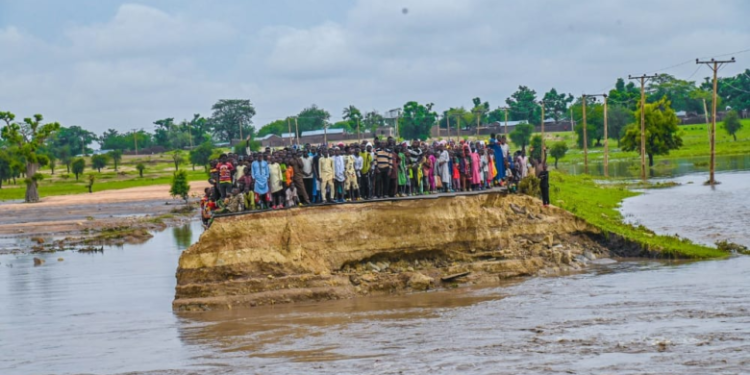Disasters can strike with little warning, leaving communities devastated and vulnerable. To effectively mitigate the impact of such calamities, having robust disaster management structures at the community level is imperative.
The National Emergency Management Agency (NEMA) under the leadership of its Director- General, Mustapha Ahmed Habib, has been a vocal advocate of this approach in view of the predicted flood threats outlook for 2023 rainy season.
Community-level disaster management empowers local residents to take ownership of their safety. By fostering cooperation among neighbors, first responders, and local authorities, these structures create a cohesive network that can respond swiftly and efficiently during emergencies.
This grassroots approach enables quicker assessments of needs, efficient distribution of resources, and timely evacuation plans, minimizing loss of life and property damage.
Moreover, community-level disaster management encourages preparedness and resilience.
With access to information and training, residents can proactively plan for potential hazards specific to their area. This ensures that vulnerable populations, such as the elderly or disabled, are not overlooked during emergencies.
In a recent Speech the by Director-General, NEMA, Mustapha Ahmed Habib, at a programme on “Downscaling of Disaster Early Warning Measures to The Grassroots for Effective Life Saving Early Actions During 2023 Rainy season” organized by NEMA in collaboration with the Kano State Government the D-G pointed out that Nigeria like other nations of the world is faced with a growing rate of occurrence and intensity of both human and nature induced disasters.
Most of the nature induced disasters are hydro-meteorological in nature powered by climate change and climate variability. Flood disaster in Nigeria has become predictable and yet annually recurring with substantial human and material costs.
In line with NEMA paradigm shift towards Disaster Risk Reduction and to take Disaster Risk Management to the grassroots, we have decided to support sub-national level actors including States, Local Governments and communities to take ownership of their responsibility of disaster preparedness, mitigation, response and recovery.
We can only achieve this through the deployment of scientific information in form of impact based predictions that constitute the foundation of early warning advisories and disaster risk mapping to be delivered to end users in disaster management and development planning.
Beyond immediate disaster response, community-level initiatives encourage sustainable development. By incorporating disaster resilience into urban planning, infrastructure, and zoning regulations, cities can better withstand future disasters, ultimately reducing economic burdens and human suffering.
While government agencies play a crucial role in disaster management, the bottom-up approach advocated by Director-General Mustapha Ahmed Habib strengthens the entire disaster response framework.
In line with this, the Director General NEMA has emphasized that there are different categories of disasters.
“Certain disasters can be avoidable; others can be transferable or adaptable. Yet, we can only achieve this by deploying credible information, developing the right plans and getting people at the grassroots to make the right decision and provide a timely response when disasters hit.
“It is worthy of note that disasters are all local, they happen in particular communities in a particular Local Government Areas. The first lifesaving responders are always local before additional support will come from the state capital or Abuja.
“We must therefore strive to support our Local Emergency Management Committees (LEMCs) with adequate capacity building, funding and equipment to take Disaster Risk Management to the communities. With this, we can build safe and resilient communities and by extension a safer and resilient Nigeria.”
These efforts when implemented will foster a sense of collective responsibility, empowers individuals, and ultimately save lives.
As we continue to face increasing climate-related threats, embracing this imperative is not just an option but a necessity for building a safer and more resilient future.

